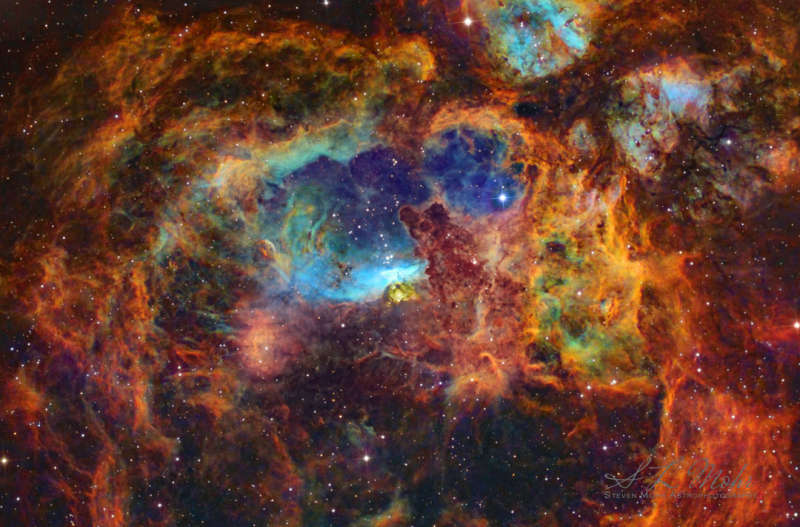
|
Credit & Copyright: Steven Mohr
Explanation:
Why is the Lobster Nebula forming some of the most massive stars known?
No one is yet sure.
Cataloged as NGC 6357, the Lobster Nebula houses the open star cluster
Pismis 24 near its center --
a home to unusually bright and
massive stars.
The overall
blue glow
near the inner star forming region results from the
emission of
ionized
hydrogen gas.
The surrounding nebula,
featured here,
holds a complex tapestry of gas,
dark dust, stars still forming,
and newly born
stars.
The intricate patterns are caused by complex interactions between
interstellar
winds,
radiation pressures,
magnetic fields, and
gravity.
NGC 6357 spans about 400 light years and lies about 8,000
light years away toward the constellation of the
Scorpion.
|
January February March April May June July August September October November December |
| ||||||||||||||||||||||||||||||||||||||||||||||||
NASA Web Site Statements, Warnings, and Disclaimers
NASA Official: Jay Norris. Specific rights apply.
A service of: LHEA at NASA / GSFC
& Michigan Tech. U.
Based on Astronomy Picture
Of the Day
Publications with keywords: emission nebula - star formation
Publications with words: emission nebula - star formation
See also:
- APOD: 2025 September 19 Á The NGC 6914 Complex
- APOD: 2025 September 10 Á The Great Lacerta Nebula
- APOD: 2025 July 21 Á Cats Paw Nebula from Webb Space Telescope
- APOD: 2025 July 16 Á The Rosette Nebula from DECam
- APOD: 2025 July 10 Á Lynds Dark Nebula 1251
- APOD: 2025 July 5 Á Ou4: The Giant Squid Nebula
- APOD: 2025 June 26 Á The Seagull Nebula
